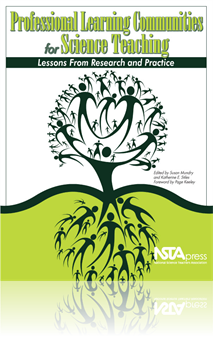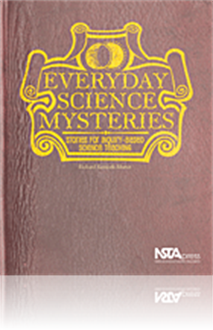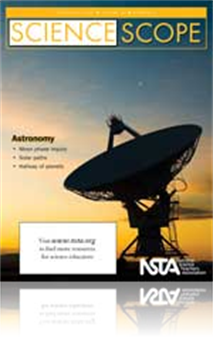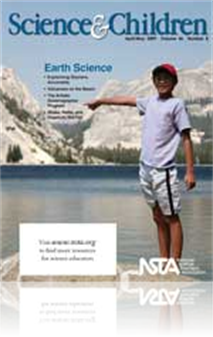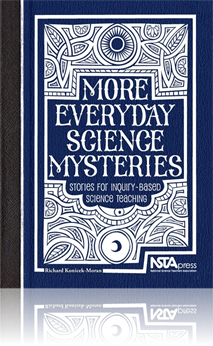All Resources
Book Chapter
Teaching Learning Collaborative: A Process for Supporting Professional Learning Communities
The teaching learning collaborative (TLC) is a unique professional development strategy that engages groups of teachers in collaborative planning and teaching of a science lesson, coaching and mentoring, and examining student work. In this chapter, t...
Book Chapter
Building Professional Development Cadres
This chapter begins with a vignette based on several anecdotes that were relayed to the authors during their years working in the Los Angeles basin with a cadre of professional developers. This story sets the stage for exploring challenges tackled by...
Book Chapter
Creating and Sustaining Science-Focused Professional Learning Communities Through Partnerships
In this chapter, the authors share selected components of The North Cascades and Olympic Science Partnership (NCOSP) model for professional learning communities (PLCs) and the impact those communities had on instruction and student learning. They off...
Book Chapter
After five years of developing and investigating professional learning communities (PLCs) in school districts in Arizona, the authors have uncovered attributes that differentiate high-performing PLCs from lower-performing PLCs and have begun to uncov...
Book Chapter
The Role of Local and State Science Leaders in Developing Professional Learning Communities
This chapter tells two stories, both focused on the role of science leadership in developing the teacher leadership that is essential for creating and maintaining professional learning communities (PLCs). The first story provides insight into how dis...
Book Chapter
The K20 Model develops professional learning communities (PLCs) and has been successful in district-wide and school initiatives across Oklahoma. It is based on four interrelated structures for engaging people in communities: networks, PLCS, communiti...
eBook
Everyday Science Mysteries: Stories for Inquiry-Based Science Teaching (e-book)
What causes condensation? Does temperature affect how well a balloon will fly? How do tiny bugs get into oatmeal? Through 15 mystery stories, this book memorably illustrates science concepts for students and reinforces the value of learning science t...
NSTA Press Book
Uncovering Student Ideas in Science, Volume 4: 25 New Formative Assessment Probes
Wouldn't it be helpful to know what your students' ideas are about a science concept before launching into a new lesson or unit? Uncovering Student Ideas in Science, Volume 4, offers 25 more formative assessment probes to help reveal students' precon...
By Joyce Tugel, Page Keeley
Journal Article
Solar Paths: An International and Integrated Look at the Sun and Seasons
Some of the most difficult concepts for students to understand in Earth science are the ideas and explanations related to the Sun and seasons. The daily rotation of the Earth causes day and night, and the differences of how it is observed at differen...
Journal Article
Every Day Science Calendar (April 2009)
This monthly feature contains facts and challenges for the science explorer. ...
Journal Article
The number of MRSA cases per year is rising—especially during football season. Could you tell me more about MRSA and what is causing this rise? ...
Journal Article
Storytelling is not just something experienced at bedtime, in the movies, or with friends. Rather, it is a way that knowledge has been transferred for generations. Stories allow the listener to gain understanding in a natural way. A good story can ca...
Journal Article
What happens when children and scientists learn together? A partnership is formed, that’s what! This article describes how a university scientist and a teacher teamed up with a local fourth-grade teacher to provide a unique opportunity for students...
Journal Article
The University of Montana (UM)—Missoula has implemented a problem-based program in which students perform scientific research focused on indoor air pollution. The Air Toxics Under the Big Sky program (Jones et al. 2007; Adams et al. 2008; Ward et a...
Journal Article
Tech Trek: TeacherTube for Science
Following in the footsteps of YouTube, TeacherTube is a website where teachers can access a trove of videos that can be used in the classroom to improve instruction. The inclusion of YouTube as a venue in the presidential debates of 2008 has brought ...
Journal Article
“Yuuuck!” “Gross!” “Cool!” The response to slugs is never indifference. These slimy creatures are perfect for captivating students’ imagination and curiosity, and they are ideal subjects to introduce investigative science. This article ...
Journal Article
In an integrated science/language arts/technology unit called “How Scientists Learn,” students researched famous scientists from the past and cutting-edge modern-day scientists. Using biography trade books and the internet, students collected and...
Journal Article
An important goal of the current reform movement in science education is to promote scientific literacy in the United States, and scientific inquiry is at its heart. However, the National Science Education Standards clearly indicate that to promote i...
Journal Article
Scope on Safety: Yes, you need a Chemical Hygiene Officer
The Chemical Hygiene Officer's (CHO) role is absolutely critical in fostering and ensuring both chemical hygiene practices and the chemical hygiene plan. OSHA defines the Chemical Hygiene Officer as an “employee who is designated by the employer, a...
Journal Article
Every Day Science Calendar (May 2009)
This monthly feature contains facts and challenges for the science explorer. ...
Journal Article
Everyday Engineering: What Makes a Bic Click?
The ballpoint pen is an ideal example of simple engineering that we use everyday. But is it really so simple? The ballpoint pen is a remarkable combination of technology and science. Its operation uses several scientific principles related to chemist...
Journal Article
In the exciting, “out of this world” activity described here, students measure the Earth using meter sticks while measuring their shadows in two distant locations. To obtain the size of the Earth, students discover the connection between the meas...
Journal Article
Tried and True: Solar System in the Hallway
After studying phenomena related to the positions and motions of the Earth, Sun, and Moon, many students are familiar with the positional ordering of the planets, but their knowledge of the distances involved is vague. Scale models are one means of b...
Journal Article
Editor’s Roundtable: International Year of Astronomy
2009 has been designated the International Year of Astronomy (IYA) because it marks the 400th anniversary of Galileo’s telescopic observations of the Moon and other bodies in the solar system, which challenged, and subsequently changed, the prevail...
Journal Article
How could a rock formed by volcanic activity get to this shoreline, surrounded by sedimentary rocks? That was the question a group of third-grade students asked—and answered—during an inquiry-based summer camp. Over a two week timeframe, the stud...
Journal Article
The Artistic Oceanographer Program
The Artistic Oceanographer Program (AOP) was designed to engage elementary school students in ocean sciences and to illustrate basic fifth-grade science and art standards with ocean-based examples. The program combines short science lessons, hands-on...
Book Chapter
This book, and particularly the stories which lie within, provide an opportunity for students to take ownership of their learning and learn science in a way that will give them a more positive attitude about science. In addition, it will serve to hel...
Book Chapter
Segmented worms are considered “yucky” by a great many people, yet they are members of a large animal group that populates the entire world and provides a great service to our planet. This story should stimulate students to want to know more abou...
Book Chapter
This story is true, although Maria and Enrique are fictional characters. A barred owl does live in the rafter of the chickee at Shark Valley and does drop owl pellets from its nest almost daily. The purpose of this story is twofold: (1) to learn more...
Book Chapter
Trees From Helicopters, Continued
Maples are very interesting trees with lots of variation in form. They provide a view of diversity in plants as well as a chance to look at natural phenomena that is very common to anyone who has had a maple tree near them. The main purpose of this s...
Book Chapter
Flowers: More Than Just Pretty
Children love to look at flowers but few are inclined to become familiar with the structure and function of the flower. This story is aimed at providing some motivation for children to learn about one of the most important evolutionary developments i...
Book Chapter
Hardly a day goes by without something arriving by e-mail or being posted on the internet that just doesn’t sound true. The students in this story are depicted as having alert skepticism about things that don’t actually add up in their minds and ...
Book Chapter
Magnetism is a force that acts over a distance. Children play with magnetic toys all of the time. Any family that has a refrigerator knows that the number of magnets on the door defines the size of the appliance. This story should give students an op...
Book Chapter
This story should give students an opportunity to discover that every liquid has its own unique boiling point and that heat applied to any liquid that has reached its boiling point will not result in an increase in temperature but will be used to cha...
Book Chapter
Dissolving things in the universal solvent water is an everyday experience for almost all of us. We don’t have a lot of trouble dissolving honey in hot tea, but when it comes to sweetening cold iced tea, it is almost impossible. Obviously, water is...
Book Chapter
This story poses a challenge to solve the mystery of light, color, and how we see color. It also asks the question, “What is color?” After investigating the phenomena of color and color filters, students should realize that light is made up of ma...
Book Chapter
This story is designed to motivate students to explore how mirrors work and how mirrors reflect the light—first reflected from objects to the mirror and then to our eyes as images—and to discover in this particular case the famed rule that “the...



